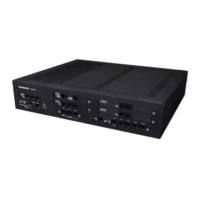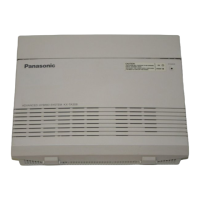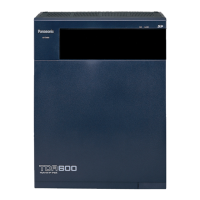18.3 PBX Configuration—[10-3]
CO & Incoming Call—DDI / DID Table—
DDI / DID Destination—Day,
Lunch,
Break, Night
18.4 PBX Configuration—[10-5] CO & Incoming Call—Miscellaneous—
Intercept—Routing to Operator -
No Destination (Destination is not programmed.)
Feature Manual References
2.1.3 ARS (Automatic Route Selection)
4.1.10 Call Transfer
5.1.10 DISA (Direct Inward System Access)
7.1.4 Flexible Numbering/Fixed Numbering
7.1.6 FWD (Call Forwarding)
10.1.12 Intercept Routing
19.1.5 TRS (Toll Restriction)
23.1 Capacity of System Resources
Operating Manual References
1.2.1 Making Calls
15.1.13 Private Network Features—Centralized Voice Mail
Description
Up
to 7 PBXs connected with this PBX in a TIE line network over VoIP or ISDN can share the services of the
Unified Messaging system of this PBX. The Unified Messaging system can provide voice mail for extensions
attached to any of the PBXs in the network. In addition, the Unified Messaging system can send Message
Waiting notifications to extensions at any PBX, and users (subscribers) can access their mailboxes directly
using the Message Waiting Button.
The Unified Messaging features available at extensions in a network are as follows:
• FWD to a Mailbox
• Intercept Routing to a Mailbox
• Voice Mail (VM) Transfer Button
• Listening to a Recorded Message (Direct Mailbox Access)
• Trunk Service & Automatic Time Mode Notification for Incoming Call
• Caller’s Identification Notification
• Status Notification
• Voice message number display
Document Version 2016-03 Feature Manual 295
15.1.13 Private Network Features—Centralized Voice Mail

